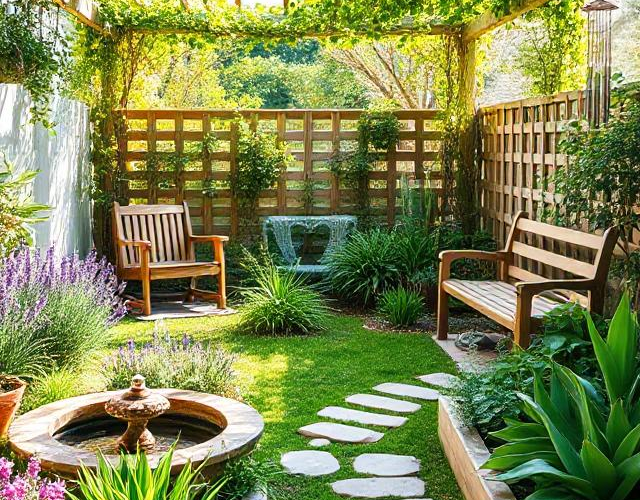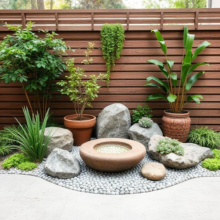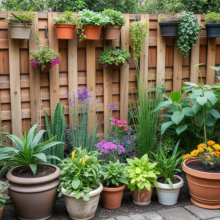How to Create a Wellness-Focused Home Garden

Introduction
In today’s fast-paced world, where stress and digital overload dominate our daily lives, having a wellness-focused home garden can be a transformative way to restore balance. A thoughtfully designed garden not only beautifies your home but also improves mental and physical well-being, enhances mindfulness, and fosters a deeper connection with nature.
This guide will help you create a serene and health-enhancing garden—whether you have a spacious backyard or a cozy balcony. You’ll discover how to choose the right plants, design a peaceful space, and incorporate mindful gardening techniques to enhance relaxation and overall wellness.
Choosing the Right Location
Maximizing Sunlight and Shade
The ideal garden location should receive adequate sunlight, as most wellness plants thrive in natural light. However, for a well-balanced garden:
- Herbs and flowers like lavender, chamomile, and rosemary require full sun (6–8 hours per day).
- Shade-loving plants such as ferns, peace lilies, and snake plants are great for shaded or indoor areas.
Indoor vs. Outdoor Wellness Gardens
Not everyone has access to a large outdoor space, but that doesn’t mean you can’t create a wellness-focused garden indoors. Consider:
- Outdoor gardens: Ideal for larger landscapes with room for water features, seating, and meditation areas.
- Indoor gardens: Perfect for small spaces, using potted plants, vertical gardens, and windowsill herbs to bring nature inside.
Selecting the Best Plants for Well-Being
The right plant selection can significantly enhance the therapeutic effects of your garden. Focus on plants known for their calming, purifying, and nourishing properties.
Herbs for Relaxation and Healing
- Lavender – Reduces stress, promotes better sleep, and adds a soothing aroma.
- Chamomile – Known for its calming effects, perfect for teas and relaxation.
- Peppermint – Stimulates mental clarity and relieves tension.
Air-Purifying Plants
Indoor air quality can be improved with plants that remove toxins and increase oxygen levels:
- Snake Plant – Filters air pollutants and produces oxygen at night.
- Peace Lily – Absorbs harmful airborne toxins.
- Aloe Vera – Cleanses air while offering skin-soothing benefits.
Edible Plants for Nutritional Benefits
Growing your own organic, nutrient-rich foods can support physical health:
- Leafy greens – Spinach, kale, and arugula are high in vitamins.
- Tomatoes and bell peppers – Rich in antioxidants that support overall well-being.
- Lemon balm and basil – Promote digestive health and stress relief.
Designing a Tranquil and Therapeutic Garden Space
A wellness garden should evoke a sense of calm, relaxation, and harmony. The layout and features play a crucial role in enhancing mental peace.
The Role of Aesthetics in Mental Wellness
- Use curved pathways rather than straight lines to encourage a slow, mindful walk.
- Choose soft, earthy tones like greens, browns, and blues for a soothing atmosphere.
Incorporating Water Features and Seating Areas
- A small fountain or pond creates the soothing sound of running water, which promotes relaxation.
- Comfortable seating (benches, swings, or hammocks) invites contemplation and meditation.
The Science Behind Gardening and Stress Reduction
Numerous scientific studies support the idea that gardening can significantly reduce stress levels. Gardening lowers cortisol, the primary stress hormone, and increases the production of dopamine and serotonin, which enhance happiness and relaxation.
According to research published in the Journal of Health Psychology, gardening can:
- Reduce symptoms of anxiety and depression.
- Improve focus and cognitive function.
- Increase exposure to beneficial soil microbes that boost immunity.
Creating a Multi-Sensory Experience in Your Garden
A truly wellness-focused garden should engage all five senses to create an immersive healing environment.
Color Therapy in Garden Design
- Greenery – Represents balance and harmony.
- Purple hues (lavender, violets) – Promote relaxation and calmness.
- Yellow and orange flowers (marigolds, sunflowers) – Uplift mood and energy levels.
Sound and Aroma Elements
- Wind chimes, rustling leaves, and water features create a meditative background.
- Fragrant plants like jasmine, rosemary, and lemongrass enhance relaxation and focus.
Mindful Gardening Practices
Gardening can be a meditative and mindful practice when done with intention. Here’s how to transform gardening into a wellness ritual:
- Practice deep breathing while tending to your plants.
- Engage in slow, intentional movements when planting or watering.
- Observe small details—the texture of leaves, the scent of flowers, the feel of soil in your hands.
Eco-Friendly and Sustainable Gardening Methods
A sustainable approach ensures that your wellness garden is not only good for you but also for the planet.
Organic Gardening
- Avoid chemical pesticides and use natural pest repellents like neem oil or companion planting.
- Opt for organic fertilizers such as compost or aged manure.
Water Conservation Techniques
- Collect and use rainwater for irrigation.
- Implement drip irrigation systems to minimize water wastage.
Sustainable Soil Management
- Practice crop rotation to maintain soil health.
- Use mulching to retain moisture and suppress weeds.
Common Mistakes to Avoid When Creating a Wellness Garden
Creating a healing garden requires thoughtful planning. Here are some pitfalls to avoid:
- Overcrowding plants – This can lead to poor air circulation and increased plant diseases.
- Ignoring plant compatibility – Some plants require vastly different conditions; avoid pairing those with conflicting needs.
- Neglecting maintenance – Regular pruning, watering, and feeding keep your garden thriving.
Are you ready to build your own wellness garden? Start today by selecting just one plant and watch as your connection with nature grows!


